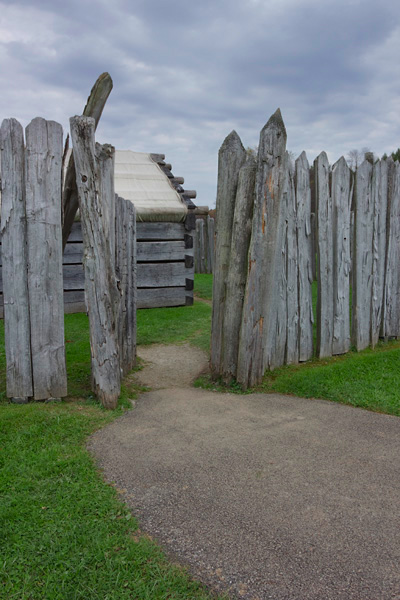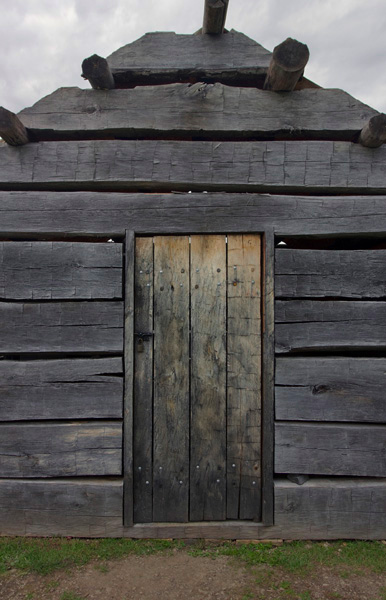
- Fort Necessity National Battlefield -
Pennsylvania
This place represents a low point in the early military career of George Washington, during the French and Indian War. Let's face it: we all have to start somewhere, and our initial efforts are rarely elegant in any field of endeavor. In this case, Washington's troubles occurred in a literal field, known as the Great Meadows, where his forces took a beating from the French and their Indian allies while attempting to defend themselves in a hastily constructed fort. This was the first and last time that Washington was ever obliged to surrender to an enemy force. (Later in life, as we all know, Washington made up for this early stumble - his later victories are highlights of some of the other destinations along my trip).
Although Fort Necessity was burned by the French, a reconstruction of it can be seen at the original site today:

The original fort was built in just two or three days, so it was necessarily crude in appearance, and only 53 feet in diameter.
The trouble here all began as both British and French colonists in America began to compete with one another for the land of the Ohio River Valley, between the Appalachian Mountains and the Mississippi River. Both cultures ventured into the region to explore, trade with Indians, build forts, etc. Neither group was especially happy to encounter the other in this territory. French forces began to harrass and drive out English explorers and traders whenever they found them.
These circumstances motivated the governor of Virginia, Robert Dinwiddie, to send the young George Washington, then a mere 21 years old, into the Ohio territory to communicate with the French, who had recently established unwelcome forts on land claimed by Virginia. The message that Washington was ordered to deliver to the French was simple: hit the road. The French dismissed the warning and sent Washington packing. (One can easily imagine the French laughing derisively, perhaps amusing themselves by referring to Governor Dinwiddie as "Dim-witty"). This was destined to end badly, of course. Soon, the dispute led to more aggressive encounters, and ultimately ignited the French and Indian War (known outside of North America as the "Seven Years War").


- The Mount Washington Tavern -
Also at this park, just a short walk from the site of Fort Necessity, you'll find the Mount Washington Tavern, This was one of the first inns where travelers could find shelter along the National Road, America's first highway - a dirt road, of course, at the time of its construction between 1811 and 1839. The road ran near this site along the route of present-day U.S. 40. The road and the inn were originally conceived by George Washington, based on his own travels and trail-blazing through the region before and during the French and Indian War.
The original building still stands, and is open to public entry. The rooms are arranged with furnishings reflecting their 19th Century appearance. But staying at a remote inn during the 1800's wasn't like staying at a modern-day Ritz-Carlton; hilariously, one visitor recounted that they were shown to a room where the bedsheets were still regarded as fresh, having been previously used by other guests for "only two or three nights."

or